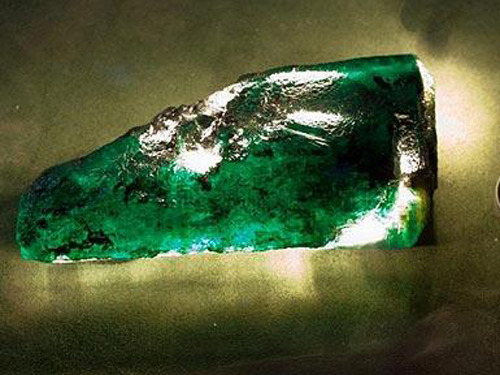
According to the Nikkei Chinese website, Myanmar’s jade export momentum has become stronger. Exports in 2013 (April 13 to March 14) increased more than three times in the previous year. The strong demand of neighboring countries in China has become the locomotive driving growth in exports. The Myanmar government has started to amend the law to promote the development of mineral resources in Myanmar by foreign-funded enterprises, and plans to cultivate gems as an important export product with natural gas. The civil war in the northern border region of Myanmar has been languishing, and the expectation of nurturing the gemstone industry as the core industry in the region is gradually heating up.
Myanmar is the world’s largest producer of jadeite, and it also produces gems such as rubies. According to a survey conducted by the Central Bureau of Statistics of Myanmar, the export volume of jadeite jade in 2013 was US$1.011.6 billion, which increased to 3.4 times in FY12 and accounted for 10% of Myanmar's total export volume for the 13th year. It is said that most of the jadeite are exported to China.
The export of 2011 was affected by China's imposing higher tariffs on imported jadeite, but the export value gradually recovered under the strong demand. In the 1990s, Myanmar established a military regime, and since then it has long suffered economic sanctions from Europe and the United States. China maintains its policy of approaching Myanmar and has been promoting hydropower development projects in the China-Burma border region. It is alleged that Myanmar and China did not reflect the smuggling trade in the trade data is also very active.
Since Myanmar’s demutualization in 2011, China’s direct investment in Myanmar has decreased, but it is still Myanmar’s largest trading partner. Myanmar's exports to China in the 13th year were approximately 2.9 billion U.S. dollars, accounting for one-fourth of Myanmar’s total exports, of which jadeite became the most important export material.
Although there are concerns that the impact of "orders of thrift," China's jewelry jewelry demand will slow down. However, it is expected that the export of jadeite in 2014 will maintain a high growth rate. About two weeks from June 24th, “The 48th Burmese jade, precious stones and pearls auction†was opened in Nay Pyi Taw, capital of the country, during which the intraday trading volume increased by 30% compared with the previous year. The Chinese businessmen who were looking for the jadeite stone in the venue were very prominent.
The Myanmar government began to revise the Mining Law in 2014. At present, studies have started to discuss the lifting of the ban on foreign companies participating in the development of mines. The expectation that the foreign-funded enterprises that allow cutting-edge mining technology to participate in the development will increase the production efficiency of jadeite is also heating up. At present, Myanmar’s largest export material is natural gas, which accounts for 30% of its total export value. Myanmar expects that precious stones resources will also become a source of earning.
Myanmar’s largest emerald producer, Kachin State in the north, has been hit hard by the civil war between the Burmese central government forces and minority armed forces, and more than 100,000 local people have become refugees. The Myanmar government began to speed up peace talks with armed forces since last fall, and the consensus reached by the armistice is in sight. The Myanmar government seems to be planning to nurture gems as the core industry in the region after the end of the civil war.
Seersucker Fabric,Seersucker Bed Sheet,Polyester Seersucker Fabric,Polyester Seersucker Bed Sheet
Changxing Dingqiang Textile Co., Ltd. , https://www.dingqiangtextile.com